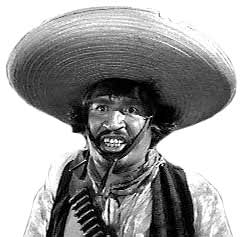semicolons
;
Some people don’t like semicolons:
Kurt Vonnegut: “Here is a lesson in creative writing. First rule: Do not use semicolons. They are transvestite hermaphrodites representing absolutely nothing. All they do is show you've been to college.”
Gertrude Stein: “[Semicolons] are more powerful more imposing more pretentious than a comma but they are a comma all the same. They really have within them deeply within them fundamentally within them the comma nature.”
Some do:
Abraham Lincoln: “With educated people, I suppose, punctuation is a matter of rule; with me it is a matter of feeling. But I must say I have a great respect for the semi-colon; it's a useful little chap.”
Lewis Thomas: “I have grown fond of semicolons in recent years. The semicolon tells you that there is still some question about the preceding full sentence; something needs to be added; it reminds you sometimes of the Greek usage. It is almost always a greater pleasure to come across a semicolon than a period. The period tells you that that is that; if you didn’t get all the meaning you wanted or expected, anyway you got all the writer intended to parcel out and now you have to move along. But with a semicolon there you get a pleasant little feeling of expectancy; there is more to come; read on; it will get clearer.”
Why Vonnegut gets so exercised about semicolons is puzzling. First of all he uses them. Here in the last sentence of his story “2 B R 0 2 B”: "Thank you, sir," said the hostess. "Your city thanks you; your country thanks you; your planet thanks you. But the deepest thanks of all is from future generations." And here in the first sentence of his story “Miss Temptation”: “Puritanism had fallen into such disrepair that not even the oldest spinster thought of putting Susanna in a ducking stool; not even the oldest farmer suspected that Susanna’s diabolical beauty had made his cow run dry.” And what’s he got against cross-dressers? And is the hermaphrodite remark meant to convey the mixed characteristics of the male comma and the female period? I’ll leave that to you.
The reputable mark of punctuation has three jobs to do and does them well:
1. To separate (or join) two independent clauses used without a conjunction, the use of the semicolon rather than a period indicating a close relationship between the clauses: I kissed the girl; I ascended into heaven.
2. To join two main clauses also separated by a conjunctive adverb, such as however or therefore, followed by a comma.
3. To separate items in a series or list when the items themselves contain commas or are long and complex. Try making sense of this series without them (I have here replaced the semicolons with Stein’s preferred commas): “Well there's egg and bacon egg, sausage and bacon, egg and spam, egg, bacon and spam, egg, bacon, sausage and spam, spam, bacon, sausage and spam, spam, egg, spam, spam, bacon and spam, spam, spam, spam, egg and spam, spam, spam, spam, spam, spam, spam, baked beans, spam, spam, spam and spam, or lobster thermidor aux crevettes, with a mornay sauce garnished with truffle paté, brandy and a fried egg on top and spam.”
Stein claims to admire the “comma nature,” but refuses to use conventional commas in her explanation, making us wonder if all she really wants it to call attention to her “daring” and “risky” prose style.
“We don’t need no stinkin’ semicolons!”
--some bandito from a Cormac McCarthy novel
The purpose of punctuation is to group words by means of conventional marks so that the meaning and the relationship of the words are clear; the absence of those marks would obscure the meaning. The Chicago Manual of Style says the function of punctuation is “to promote ease of reading by clarifying relationships within and between sentences. This function, although it allows for a degree of subjectivity, should in turn be governed by the consistent application of some basic principles lest the subjective element obscure the meaning.”

